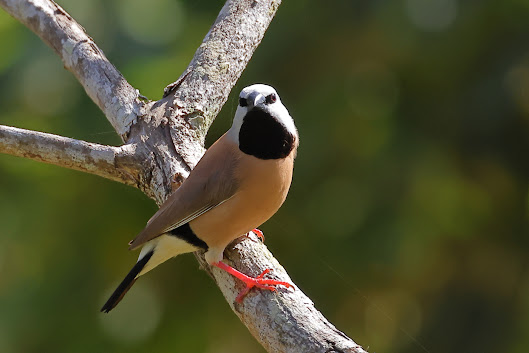
Beach Thick-knee (Esacus magnirostris) trots over the sands at Taylors Beach, near Ingham, as I looked - in vain - for coastal waders on a low-tide morning this week. Blame, in part, the sand. Surging floodwaters early in the year washed sand over former areas of mud and sea grass. So the beach flats hold fewer feeding attractions.

Here's the only other bird that came close to the camera. No surprise that it's a Red-capped Plover (Charadrius ruficapillus). Not too many beaches up and down the coast without a pair of these plovers running busily here and there.














































